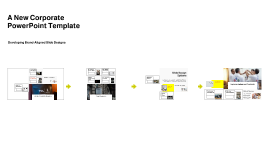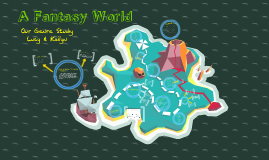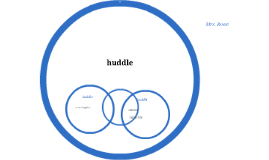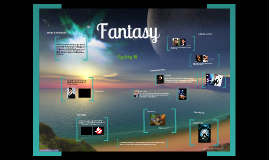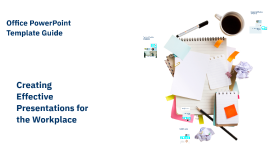Fantasy
Transcript: A Fantasy World 1. A fiction [piece] evoking and containing a substantial and irreducible element of the supernatural with which the mortal characters in the story and the readers become on at least partly familiar terms (Sandner, 2004). Portray Other Worlds Elements of Magic Talking Animals Strange Characters & Objects Hero's Journey Supernatural & Universal Themes of Good v. Evil Can be Allegorical, Spiritual, Satirical, or Political Connection to Historical Fiction Comparison of Reality v. Imaginative World Culturally Diverse Creative Writing & Drama Abstract Thinking Critical Thinking & Analysis Short Story Collections Twelve Impossible Things before Breakfast by Jane Yolen The Book of Dragons by E. Nesbit Novels The Castle in the Attic by Elizabeth Winthrop A Wrinkle in Time by Madeleine L’Engle Picture Books The Frog Prince Continued by Jon Scieszka Merlin and the Dragons by Jane Yolen Poetry Jabberwocky: From Through the Looking Glass by Lewis Carroll Fairies, Trolls and Goblins Galore by Dilys Evans Modern Fantasy v. Traditional Fantasy Vocabulary Development: Encourages higher-level thinking; complex & abstract wording; variety of different cultural languages; imaginative & creative license (ex. Harry Potter & Dr. Seuss) Traditional Fantasy Modern Fantasy Kurkjian, (2008) 3. Fantasies allow the reader to consider and speculate about central and sometimes painfully realistic themes in a way that is more palatable than in realistic fiction or fact (Kurkjian, 2006). Strengths: Creativity & Passion Incorporating into Multiple Disciplines Personalization & Engagement Our Genre Study Lucy & Kailyn For middle school-aged children, they develop "a greater sensitivity to more subtle violations of social and psychological reality." It's the idea that fantasy is impossible, yet we believe so strongly that it is real, that it becomes apart of us and our reality. ELL students, like native-born students, may welcome the idea of escapism, commonly found in the fantasy genre. ELL students can read fantasy literature and be taken out of their reality, which can sometimes be uncomfortable or scary, and place them in a world that is safer and more appealing. This world will help them develop their language skills and get them reading. Reading Comprehension: Familiar stories of right v. wrong; inner meanings to compare to own lives; inspires thoughtful reading due to engagement (Peregoy & Boyle, 1991). Features To Look for in Fantasy Literature What Fantasy Means to Us (Cruz, 2004) "With age, children become increasingly able to evaluate literature on the basis of their correspondence of social and psychological reality." This One is Nice Too! (Kurkjian, 2006) Landry, M.O., (1982) Age Appreciation Encouraging a Balanced Literacy Program "Children can be so engaged that, for the moment, they are totally immersed in the 'secondary world' of the story." (Sipe, 2006) 2. Fantasy seeks the undefinable; its subject is nothing less than the human spirit. This, in part, accounts for its powerful impact. Fantasy is never content with objective testimony to pragmatic reality; instead, it explores the world of human kind and its spiritual reality (Timmerman, 1983). What is Fantasy? A Working Definition How About This One? Examples of Fantasy Literature (Cruz, 2004) Oral Tradition Collected Stories Vague Setting Magical Characters that do not grow or change What's the Draw of Fantasy Literature? Fantastic Worlds, Characters, & Objects Time Shifts Talking Animals Magic Multiple Interpretations Call to the Quest Guides & Helpers Quest Challenges Goal of Quest Journey Home Fantasy Literature for Classroom Use SOURCES "For the genre of fantasy, elementary students have a "limited range of real life comparisons, centered primarily around the question 'does this exist in real life?'" ELL Students & The Fantasy Genre Fluency & Writing: Strengthens creative writing skills; tapping into prior knowledge; repetition; analytical reflections of the fantastical story; meaningful relationships to the characters & story itself Associated with an Author Setting is Detailed & Credible Characters Grow & Change "An irony about fantasy is that despite the fanciful characters, strange imaginary worlds, and bizarre situations encountered, it has the power to help us better understand reality." (Kurkjian, 2006) When children read about a fantastical world, far removed from their real lives, it is much safer to think about issues of loss, betrayal, and change. What ELL Students Bring: Background Knowledge Cultural Diversity Unique Life Experiences Possible Difficulties: Figures of Speech Formulaic Expressions Metacognition Phase & Analysis Possible Advantages: Predictable Plots Engagement (Entertainment Factor) Escapism Weaknesses: Disorganization Caught Up in Imagination Aspect Finding a Balance Cruz, M. C., Pollock, K. B., Meyer, R., Short, K. G., & Johnson, K. (2004). Stepping into the wardrobe: A fantasy genre study. Language Arts, 81(3), 184-195.






